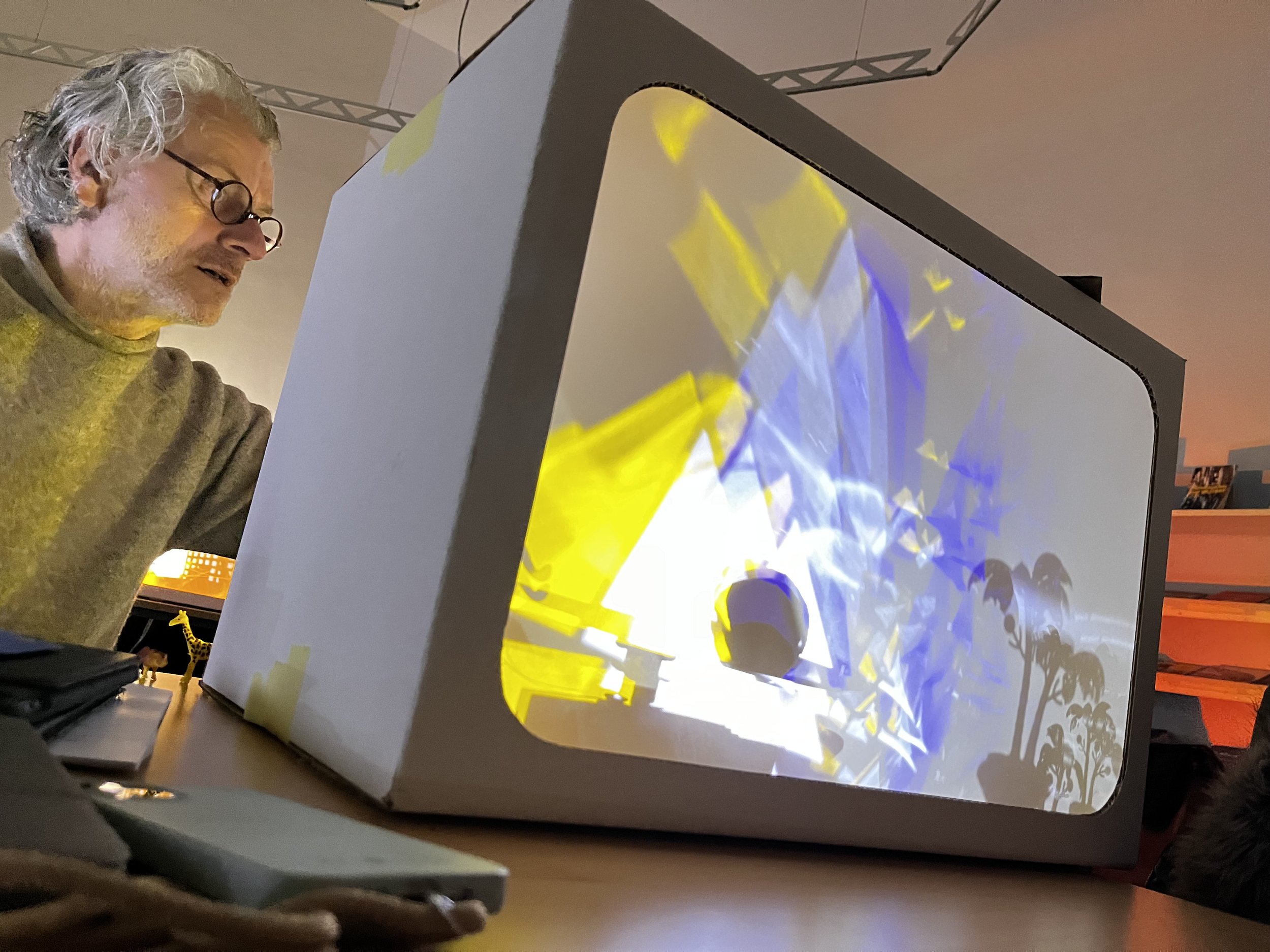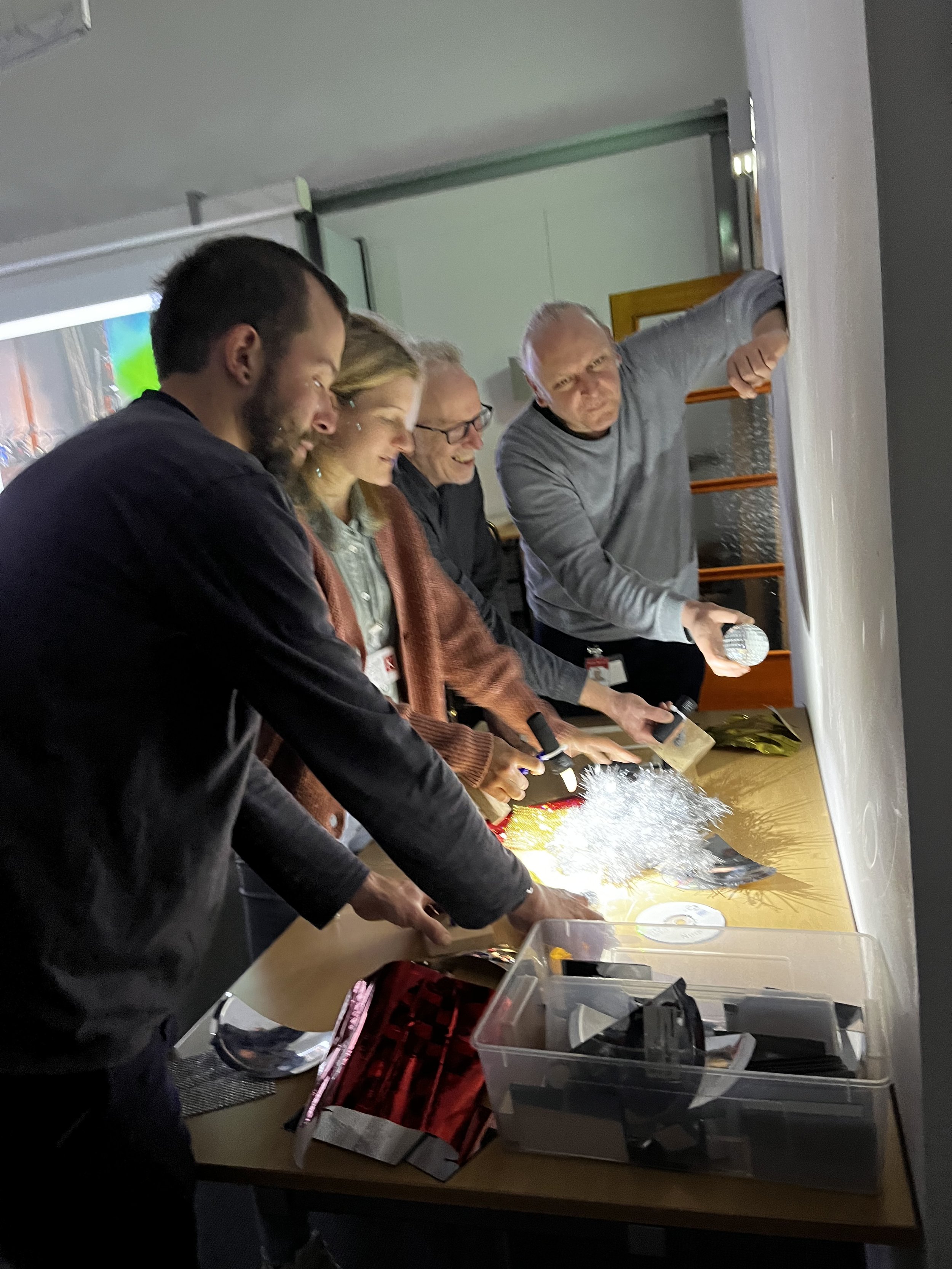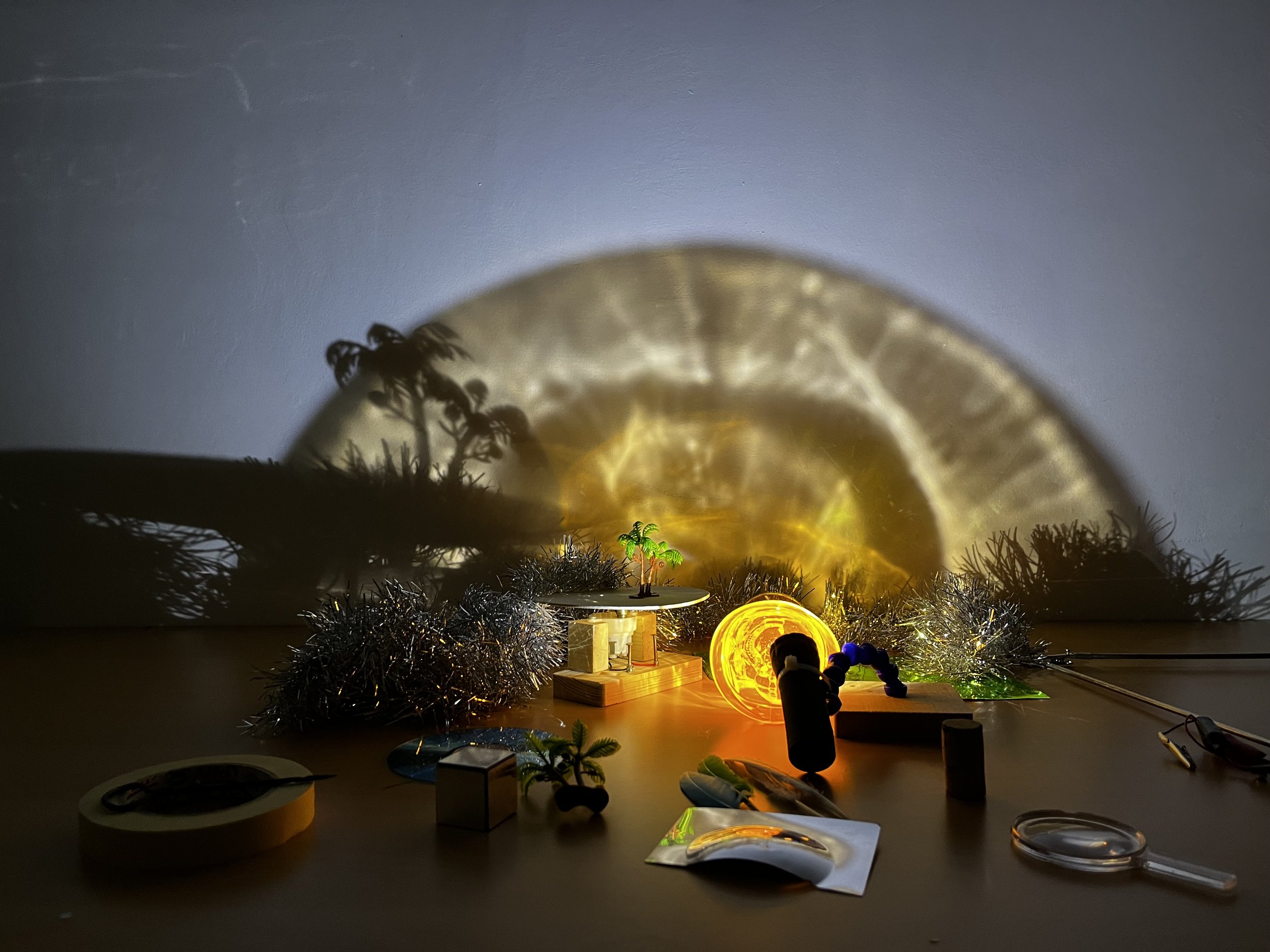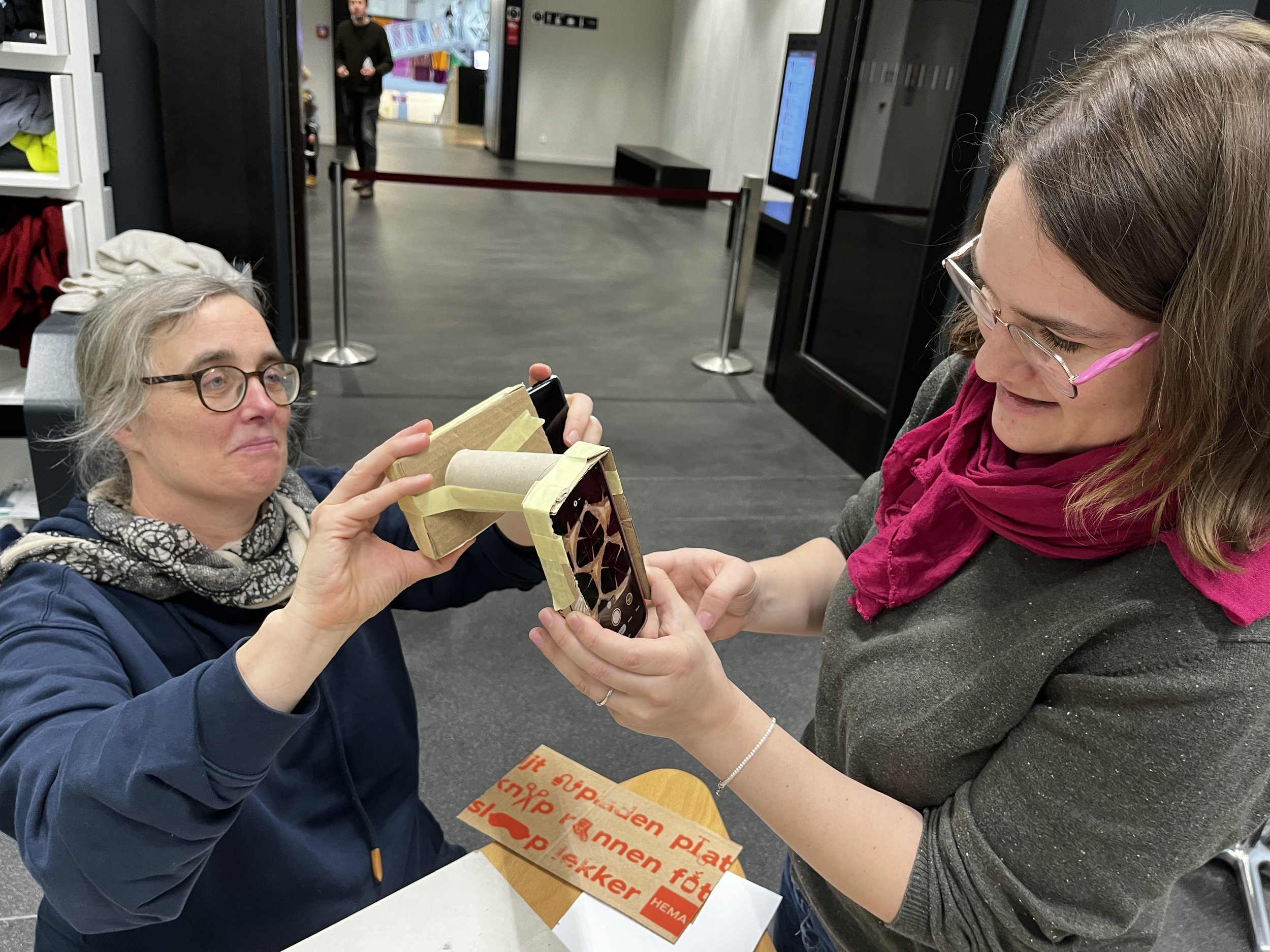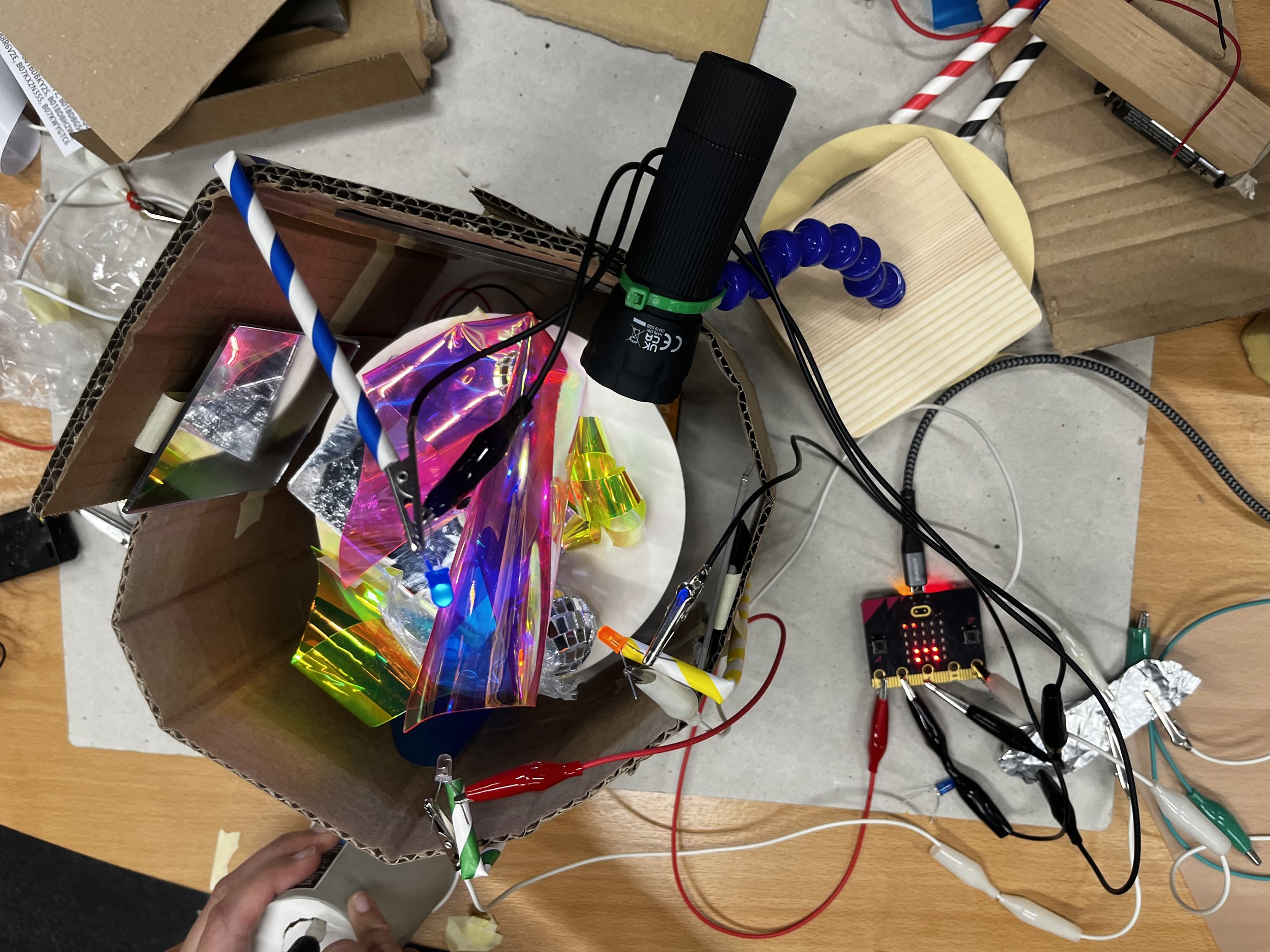Tinkering Workshop at Deutsches Museum
Last week I headed to the Deutsches Museum in Munich for a three day professional development workshop with teachers and museum professionals to explore ideas related to tinkering with art, science and technology. I’ve been working with this venerable institution since my days in the Tinkering Studio as part of the Tinkering EU project so it was nice to collaborate with the team there again.
The first couple days of the workshop gave participants a chance to try out a couple of classic tinkering activities led by the educators at the Deutsches Museum. Building scribbling machines and cardboard automata gave participants the chance to think about their experience as learners and how the materials, environment and facilitation supported the tinkering process.
As usual I was amazed by the new ideas that come up even after leading these activites time and again. One really interesting idea from a workshop participant was a wind-up automata complete with a water wheel on the end of the crankshaft to slow down the spinning.
In the afternoon of the second day the group explored the “light play” activity where we build scenes with lights, motors and all types of reflective, transparent and colorful objects. Some of the participants built their vignettes in the traditional boxes with screens and others expanded their creations on large white walls (and event ceilings).
One experiment that I tried this time was asking people to write down one emotion and one time of day and then find a partner to combine themes. So we had light play sculptures with prompts like “angry sunrise” and “embarrassed midnight” which I felt resulted in some interesting materials investigations. We used the light play activity as a jumping off point for a conversation about why and how to add in artistic elements to the tinkering process.
The next day we moved down to the innovation and technology lab in the museum started off with a new workshop theme of building kaleidoscopes. We’ve been experimenting with different shapes and arrangements of mirrors as part of the prototyping process for the LEGO playful museum learning network grant. In this workshop I wanted to push the boundaries for kaleidoscope building and involve the participants in activity that is still under development.
I was really impressed by the variety of ideas that they explored using just a few materials (cardboard, masking tape, cardstock mirror sheets with a sticky back and our cellphones. Some of the experiments included a super-long kaleidoscope tube, six-sided mirror arrangements and even a really wild and surprising double kaleidoscope where two phones multiplied the reflection effect.
For the first time trying this more open-ended version of making kaleidoscopes, I felt that it had a lot of important tinkering qualities. The materials were flexible, participants got immediate feedback on their designs and they could test out new ideas. It was nice to see that some of the participants who originally questioned if this was more about making a “correct” kaleidoscope saw that with deliberate facilitation, materials choices and environments it was possible to make the activity more tinkering focused.
For the afternoon we started to explore some digital extensions to the kaleidoscope and light play ideas. We had a quick introduction to micro:bit, servo motors, switches and LEDs, shared a couple examples and then let people work in small groups to make their own investigations.
We had about three hours in total for the brainstorming, building and sharing of the projects. While that was not nearly enough time for a deep dive with these complex topics, I felt that it did give participants a taste of how they could create extensions to tinkering activities.
Many of the groups focused on making programmable sculptures with servo motors and LEDs that they could look at under the kaleidoscopes. It was also a big construction and engineering challenge to manage all of the cables and connections so they didn’t get in the way of the spinning elements.
Several teams explored the music blocks in make:code either using the on board speaker of version 2.0 of the micro:bit or connecting an external speaker that was part of an expanded circuit board set. This group timed their lights to blink in time with the music making a kaleidoscopic light show!
At the end of the day we discussed next steps for each of us with tinkering in our classrooms, museums and other educational programs. I’m excited to see how the ideas about tinkering from this creative and thoughtful workshop group develop over time.





